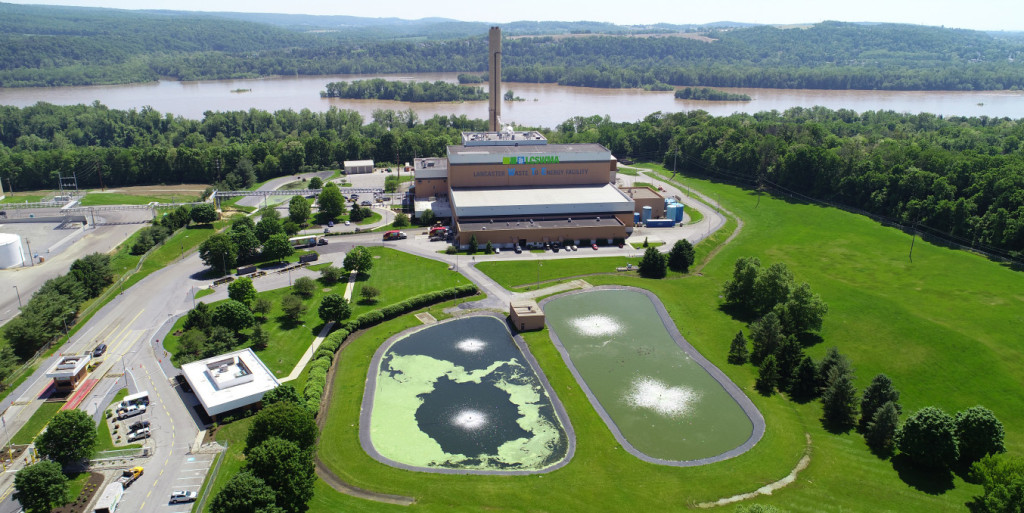Local Services
Waste to Energy at LCSWMA
You might have heard or seen Lancaster County Solid Waste Management Authority’s mission a time or two: Managing waste as a resource to protect and benefit our community. But how are they really using waste as a resource?

You might have heard or seen Lancaster County Solid Waste Management Authority’s mission a time or two: Managing waste as a resource to protect and benefit our community. But how are they really using waste as a resource?
What is waste-to-energy?
Waste is proven to be an energy-producing resource through a process called waste-to-energy (WTE). This is where non-hazardous municipal solid waste (MSW), or garbage, is burned to produce steam which then spins a turbine to generate electricity.
How does LCSWMA’s system work?
First, Lancaster County recycles and separates household hazardous waste— totaling approximately 46.5% of the waste generated in the county. LCSWMA then manages and processes nearly one million tons of the remaining waste each year at its locations. Most of it ends up at one of two LCSWMA waste-to-energy facilities.
At the Lancaster Waste-to-Energy Facility in Conoy Township, transfer trailers from the Transfer Station Complex near Lancaster City as well as local collection vehicles deliver waste to the site. Trash is stacked several stories high in a 197-foot-long concrete pit that is capable of holding nearly 9,000 tons of garbage. A large grapple crane pulls from the storage pits and continuously feeds one of three boilers—a process that runs all day, every day.
The trash serves as fuel for the fire which burns between 1,800- and 2,200-degrees Fahrenheit. Water-filled tubes in the boilers are heated and the water is converted to pressurized steam that is forced through a turbine to generate usable electricity. About 20% of the steam is piped to an adjacent business (Perdue AgriBusiness) where it is utilized for soybean processing. The steam replaces the need for fossil fuels.
And that’s not the end of the story. The ash from the WTE process still contains ferrous and nonferrous metals like pans, gears, utensils, bicycles, tin cans, and mattress springs. Magnets and eddy currents remove the metals which are then sent to recycling markets. LCSWMA is extracting and recycling approximately 10,000 tons of metal a year from the ash— metal that doesn’t end up in the landfill!
Waste to Energy At a Glance
• 90% waste reduction
• Saves landfill capacity
• Preserves land
• Reduces greenhouse gas emissions by eliminating the creation of methane if the waste had been landfilled
• Provides clean energy and steam
• Allows for metal recovery and recycling
What are the benefits to Lancaster County?
By combusting nearly 1,200 tons of trash a day in Lancaster County, LCSWMA is generating about 36 megawatts of electricity at a given time. The facility itself consumes six of those megawatts and 25 are sold into the local power grid—enough to power more than 20,000 Lancaster County homes and businesses! The remaining steam is sent to Perdue AgriBusiness.
Another benefit is land preservation. The waste-to-energy process reduces the waste volume by 90%. That means only about 10% of the MSW (now in the form of ash) ends up in the landfill. Although landfilling all MSW is cheaper and the most common method across the country, it requires a massive amount of land and produces harmful greenhouse gas (methane).
LCSWMA’s 96-acre landfill in Manor Township began operating in 1989. Without waste-to-energy, Lancaster County likely would have needed two more landfills of the same size. In fact, the existing Frey Farm Landfill would have reached capacity in 2001.
Although the combustion process is not emission-free, emissions from the WTE facility are strictly and consistently monitored by the Department of Environmental Protection (DEP) and publicly reported. LCSWMA has an outstanding history of operating below the DEP’s permitted emissions limits, and the facility operates up to 99% below federal emissions standards.
That’s just one way LCSWMA is managing waste as a resource to protect and benefit our community. Learn other ways and take a Virtual Tour of their sites at lcswma.org.
Left: The pit is capable of holding nearly 9,000 tons of garbage. | Center: The waste is combusted by burning at up to 2,200 degrees. | Right: The sophisticated control center continually monitors the combustion process and emissions.



